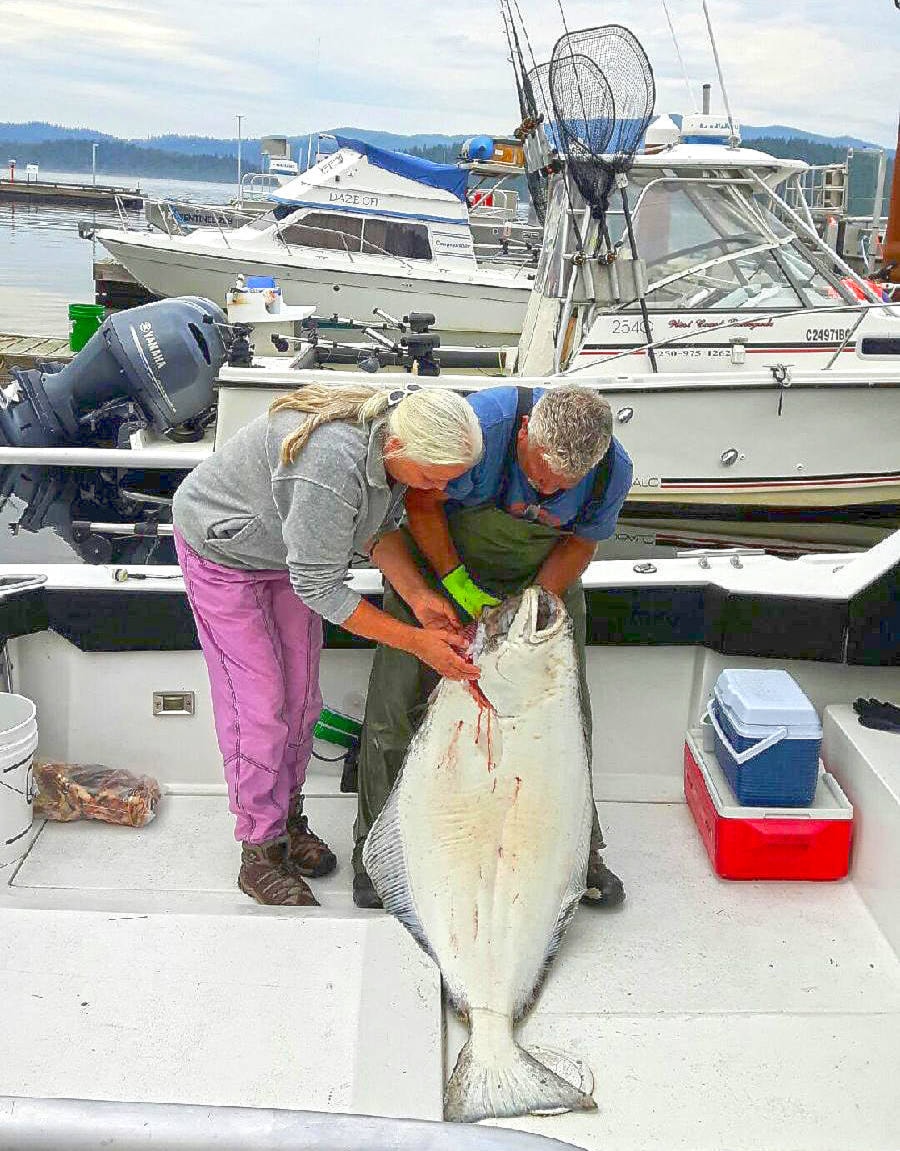With just 36 hours notice, recreational halibut fishing was closed for the season.
“In the past they’ve given us at least five to six days of notice,” said Rodney Proskiw, who owns and operates Foggy Point Fishing Charters in Prince Rupert. “I had 18 days booked and they’re all cancelled. They all want to catch halibut. This is going to cost me my season.”
For the first time in five years, the Fisheries and Oceans Canada (DFO) made the call to close the recreational halibut fishing season early, on Sept. 6, based on catch data for the year that estimated the fishery would reach its annual allocation by mid-September.
“This year our data, so far through the summer, is suggesting that the average catch of a halibut is larger than it was in previous years and there are more fish being caught compared to previous years,” said Neil Davis, director of resource management for DFO. The last time the department closed the fishery was in 2012.
Commercial fishing of halibut is still open, and Davis expects it will be open until mid-November when quota holders typically catch close to their total allotment. For recreational anglers, and small businesses that run charters for tourists, or fish lodges off the coast, the only option left to continue fishing for halibut is to apply for an experimental licence.
In the fishing closure notice, the government offers the experimental licence program. The program was introduced in 2012 by DFO, Davis said, and it allows anglers and recreational sport fishing businesses another option to fish for halibut in the event that the recreational fishery closes — or if they want to fish for more halibut in the regular fishery.
Applying for the experimental licence is free. DFO speaks with the applicant to make sure they understand how it works, and then the angler would be responsible for acquiring quota from a commercial licence holder or another experimental licence holder.
“The department doesn’t oversee the cost of acquiring the quota. We don’t have direct information of that price,” Davis said.
But according to the executive director of the Sport Fishing Institute of B.C., Owen Bird, a leased quota is around $9 a pound.
What brought about the experimental program began in 2007. That year, recreational anglers were originally given 12 per cent of the total allowable catch of halibut, but when the fishery kept closing early, DFO responded in 2012 to allocate another three per cent to recreational anglers (approximately 1.1 million pounds).
But 435 commercial halibut-fishing operations and quota holders asked for compensation after losing a slice of their annual allotment. DFO created the experimental licence program, allowing recreational anglers to purchase a piece of the commercial halibut quota. Not everyone is convinced the program was the answer. “It commercializes a public property resource,” Bird said.
“DFO has been compliant to make a public resource more private,” said Skeena-Bulkley Valley MP Nathan Cullen. “If you continue to privatize it you lose it further and further.”
To avoid closing the recreational fishery and needing to purchase quota from the commercial licence holders, each year a sport fishery advisory board, made up of recreational anglers, guides and representatives, meet with DFO to define management measures based on the total allowable catch to provide the recreational fishery with a guideline to keep within their allocation.
“We’ve managed to keep it open because of the restrictions we put in voluntarily,” Proskiw said.
His customers, and any other recreational anglers in Canada, are allowed one halibut per day, up to a total of six. The first halibut can be 133 cm, the second must be no more than 83 cm. Once the angler returns to their ordinary residence with two fish, then the possession limit resets and they can fish for halibut two more times that year.
Last year, the recreational fishery was approximately 60,000 pounds under the allotment. This year’s total allowable catch is similar, but Bird said the biomass of the halibut has grown from year to year. He criticizes DFO’s decision to close the fishery in September.
“This is a developing science but it’s very clear that the forecasts are based on the fishery of the last two years and it’s very different this year,” he said.
But most of all, he frowns upon the experimental licence program.
“There is virtually no enforcement. You are able to reconcile your quota account as long as you do it by Dec. 31 and people can buy as few as 20 pounds of halibut quota and those trying to game the system, that’s their ticket to ride to cheat the system. Not in the spirit of recreational fishing,” Bird said.
